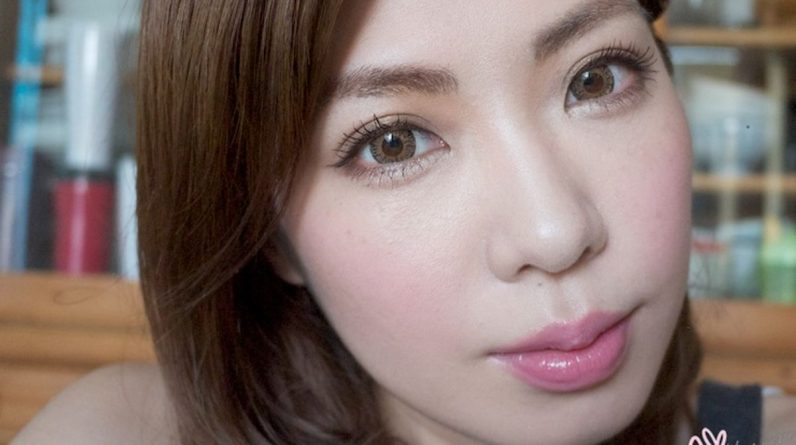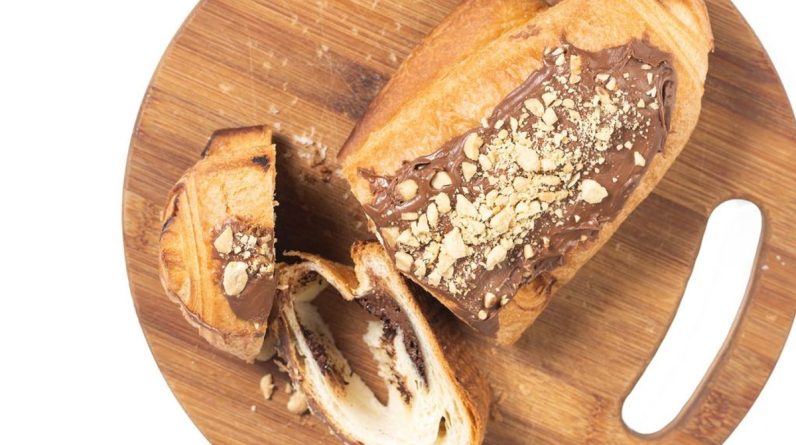Maintaining healthy and beautiful hair is a top priority for many people. In this article, we will uncover the 7 secrets to achieving and maintaining healthy hair. From understanding the structure of hair to proper hair care routines and nutrition, we will cover all the essential aspects of hair health. Additionally, we will explore styling techniques and natural remedies for optimal hair care. By following these secrets, you can have the luscious and vibrant hair you’ve always dreamed of.
Contents
Key Takeaways
- Understanding the anatomy of hair and the hair growth cycle is essential for maintaining healthy hair.
- Choosing the right shampoo and conditioner, and following proper washing and drying techniques, is crucial for hair care.
- A balanced diet rich in essential nutrients and proper hydration are key factors in promoting hair health.
- Avoiding excessive heat styling, gentle brushing and detangling, and using protective hairstyles can prevent damage to the hair.
- Natural remedies such as aloe vera, coconut oil, and herbal hair rinses can nourish and improve the health of your hair.
Understanding Hair Structure

The Anatomy of Hair
Understanding the anatomy of hair is essential for maintaining its health and beauty. Hair is composed of three main layers: the cuticle, cortex, and medulla. The cuticle is the outermost layer of the hair shaft and acts as a protective barrier. It consists of overlapping scales that help to prevent damage and lock in moisture. The cortex is the middle layer and contains the pigment that gives hair its color. It also provides strength and elasticity to the hair. The medulla is the innermost layer and is only present in thick hairs. It helps to provide structure and support to the hair shaft.
Hair Growth Cycle
The hair growth cycle is a continuous process that consists of three phases: anagen, catagen, and telogen. During the anagen phase, which lasts for several years, the hair follicles actively produce new hair cells. This is the phase when hair growth occurs. The catagen phase is a transitional phase that lasts for a few weeks. In this phase, the hair follicles shrink and detach from the blood supply, preparing for the next phase. The telogen phase is the resting phase, which lasts for a few months. During this phase, the old hair sheds and new hair begins to grow. It is important to understand the hair growth cycle in order to maintain healthy hair and address any hair problems that may arise.
Common Hair Problems
Common hair problems can be frustrating and affect the overall health and appearance of your hair. Some of the most common hair problems include split ends, frizz, dandruff, hair loss, oily scalp, dry hair, thinning hair, and color damage. These issues can be caused by various factors such as excessive heat styling, harsh hair products, lack of proper nutrition, and environmental factors. It’s important to address these problems to maintain healthy and beautiful hair.
Proper Hair Care Routine

Choosing the Right Shampoo and Conditioner
The choice of shampoo plays a vital role in hair care. Opt for a mild, sulphate-free shampoo that matches your hair type. Avoid over washing, as frequent shampooing can strip your hair of its natural oils. For most, shampooing 2-3 times a week is sufficient. Conditioning is a crucial step in maintaining hair health. Select a conditioner that aligns with your hair type and apply it predominantly to the hair ends. Consider a weekly deep-conditioning treatment to provide your hair with that extra boost of moisture.
Tips for Washing and Drying Hair
When washing and drying your hair, it’s important to follow a few tips to keep your hair healthy and avoid damage. First, choose a mild, sulfate-free shampoo that matches your hair type. Avoid over-washing, as frequent shampooing can strip your hair of its natural oils. Instead, aim to shampoo 2-3 times a week. After shampooing, apply a conditioner predominantly to the hair ends to moisturize and nourish your hair. Consider a weekly deep-conditioning treatment for an extra boost of moisture. When drying your hair, avoid aggressive rubbing or twisting. Instead, use a microfiber towel to gently dab your hair and help it dry more quickly. Embrace natural air drying whenever possible to minimize heat exposure.
Protecting Hair from Heat Damage
Excessive use of heat styling tools can damage your hair. Use heat protectant sprays or serums before styling and aim to minimise heat exposure. Embrace natural air drying whenever possible.
Nutrition for Healthy Hair

Essential Nutrients for Hair Health
To support healthy hair growth, it is important to ensure that your body is getting enough essential nutrients. Some of the key nutrients needed for healthy hair include zinc, omega-3 fatty acids, folic acid, vitamin B6, vitamin B12, vitamin C, vitamin D, magnesium, and biotin. These vitamins and minerals are involved in new cell growth and without them, our hair cannot thrive. Additionally, studies have shown that restricting carbohydrates can lead to hair loss.
One important food for hair health is salmon, specifically wild salmon. Salmon provides high-quality protein, omega-3 fatty acids, and other essential nutrients that promote healthy hair growth. Including salmon in your diet can help nourish your hair from within.
In addition to salmon, there are other foods that are beneficial for hair health. Eggs are a valuable source of protein, vitamin B12, and biotin, which are essential for healthy hair. Citrus fruits, such as oranges and grapefruits, are rich in folic acid, which is necessary for the production of red blood cells that carry nutrients to the hair follicles.
In summary, maintaining a diet rich in essential nutrients is crucial for healthy hair. Including foods like salmon, eggs, and citrus fruits can provide the necessary vitamins and minerals to support hair growth and overall hair health.
Foods to Promote Hair Growth
To promote healthy hair growth, it is important to include certain foods in your diet. Here are some foods that can help:
The Role of Hydration
Hydration plays a crucial role in maintaining healthy hair. Drinking an adequate amount of water helps to keep the scalp hydrated, which is essential for promoting hair growth. It also prevents uncomfortable skin irritation and dryness. In addition to drinking water, using moisturizing hair products can further enhance hydration. These products help to lock in moisture and prevent hair from becoming brittle and prone to breakage. Proper hydration not only improves the overall health of your hair but also contributes to its shine and luster.
Styling Techniques for Healthy Hair

Avoiding Excessive Heat Styling
Excessive use of heat styling tools can damage your hair. It is important to protect your hair from heat by using heat protectant sprays or serums before styling. Embrace natural air drying whenever possible to minimize heat exposure. Additionally, consider using a silk or satin headscarf or pillowcase to reduce friction and protect your curls overnight. Remember, heatless styling techniques can help maintain the health of your hair.
Gentle Brushing and Detangling
Gentle brushing and detangling are essential for maintaining healthy hair. Using a brush with flexible bristles can help remove knots and tangles without causing damage. It’s recommended to brush your hair at least once a day to distribute natural oils and promote blood flow. Additionally, massaging your scalp can increase circulation and promote a healthy scalp. Avoid touching your hair too much, as it can transfer dirt and oil from your hands to your hair, making it greasy. Instead, keep a scrunchie on your wrist to tie your hair back when needed.
Protective Hairstyles
Protective hairstyles are an essential part of maintaining healthy hair, especially for those with natural curls. These hairstyles help to minimize breakage and damage caused by daily styling and environmental factors. Here are some popular protective hairstyles:
- Braids: Braiding your hair can help to protect it from the elements and reduce manipulation, allowing your hair to grow and retain moisture.
- Twists: Twisting your hair is another great option for protective styling. It helps to keep your hair moisturized and prevents tangling and breakage.
- Buns: Wearing your hair in a bun can help to protect the ends of your hair, which are more prone to damage. It also keeps your hair out of your face and prevents tangles.
Remember, it’s important to choose hairstyles that are gentle on your hair and scalp. Avoid styles that pull too tightly or cause tension on your hairline. Experiment with different protective hairstyles to find what works best for you and your hair type.
Natural Remedies for Hair Care

Benefits of Aloe Vera for Hair
Aloe vera is a versatile plant that offers numerous benefits for hair health. It contains enzymes that promote hair growth and prevent hair loss. Aloe vera also has moisturizing properties that help to hydrate the scalp and reduce dandruff. Additionally, it has a soothing effect on the scalp, relieving itchiness and irritation. To incorporate aloe vera into your hair care routine, you can use aloe vera gel as a hair mask or mix it with your shampoo and conditioner. Regular use of aloe vera can result in stronger, shinier, and healthier hair.
Using Coconut Oil for Hair Health
Coconut oil is a popular natural remedy for promoting hair health. It has moisturizing properties that can help nourish and hydrate the hair, making it appear shinier and healthier. Additionally, coconut oil can penetrate the hair shaft, providing deep conditioning and strengthening benefits. Regular use of coconut oil can also help reduce protein loss in the hair, which can lead to stronger and less prone to breakage hair.
If you’re considering using coconut oil for your hair, here are some tips to keep in mind:
- Choose virgin or extra virgin coconut oil, as it is less processed and retains more of its beneficial properties.
- Apply coconut oil to damp hair, focusing on the ends and avoiding the scalp to prevent greasiness.
- Leave the oil on for at least 30 minutes or overnight for deep conditioning.
- Rinse thoroughly with warm water and shampoo to remove the oil.
Remember, while coconut oil can be beneficial for many hair types, it may not work for everyone. It’s important to experiment and find what works best for your hair.
Herbal Hair Rinse Recipes
Herbal hair rinses can be a great addition to your hair care routine. They can help restore luster, shine, and softness to the hair. Here are some DIY herbal hair rinse recipes that you can try:
-
Rosemary and Lavender Rinse: Boil a handful of rosemary and lavender in water for 15 minutes. Let it cool and strain the mixture. Use it as a final rinse after shampooing and conditioning your hair.
-
Chamomile and Calendula Rinse: Steep chamomile and calendula flowers in hot water for 30 minutes. Strain the mixture and use it as a hair rinse to add shine and enhance blonde hair.
-
Nettle and Peppermint Rinse: Boil nettle leaves and peppermint leaves in water for 20 minutes. Let it cool and strain the mixture. Use it as a final rinse to promote hair growth and reduce dandruff.
Remember to always patch test any new ingredients before using them on your hair.
Are you tired of dealing with dry, damaged hair? Look no further! Our website, Beauty Trend, is here to help you discover natural remedies for hair care. From homemade hair masks to essential oils, we have all the tips and tricks you need to achieve healthy, luscious locks. Say goodbye to frizz and hello to shiny, manageable hair. Visit our website today to learn more about the latest beauty trends and find the perfect solution for your hair care needs.
Frequently Asked Questions
How often should I trim my hair?
It is recommended to trim your hair every 6-8 weeks to prevent split ends and promote healthy hair growth.
What is the best shampoo and conditioner for my hair type?
The best shampoo and conditioner for your hair type depends on your specific needs. It is recommended to choose products that are sulfate-free and cater to your hair concerns, such as moisturizing, volumizing, or color-safe.
How can I protect my hair from heat damage?
To protect your hair from heat damage, it is important to use heat protectant sprays or serums before using styling tools. Additionally, using lower heat settings and minimizing the frequency of heat styling can help prevent damage.
Are there any natural remedies for promoting hair growth?
Yes, there are natural remedies that can promote hair growth. Some popular options include using aloe vera gel, coconut oil, and herbal hair rinses. However, it is important to note that results may vary and consulting with a healthcare professional is recommended.
How can I prevent hair breakage and frizz?
To prevent hair breakage and frizz, it is important to use a wide-toothed comb or a brush with soft bristles for gentle detangling. Additionally, using hair masks or oils can provide hydration and nourishment to the hair, reducing breakage and frizz.
Can stress affect the health of my hair?
Yes, high stress levels can contribute to hair loss and other hair problems. Managing stress through relaxation techniques, exercise, and a healthy lifestyle can help maintain the health of your hair.







